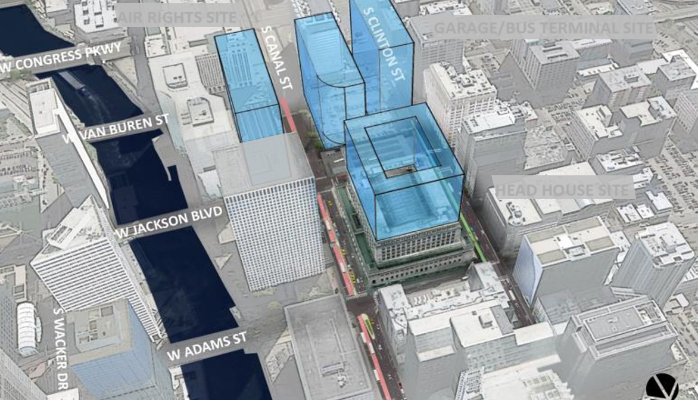Illinois legislature passes new policy that will aid the financing of transit projects
A just-passed bill in Illinois will make it easier to finance the construction and expansion of transit service across the state, making it easier for several crucial transit projects to go forward in the Chicago region.
This post was written by Peter Skosey, the Executive Vice President of the Metropolitan Planning Council in Chicago, Illinois, and reprinted here with his permission. MPC is a T4America member. Curious about membership with T4America? Find out more here.
Transit in Chicago just got a whole lot better, thanks to the General Assembly in Springfield — not the actor normally credited with such matters.
On July 1, 2016, the House and Senate approved the Transit Facility Improvement Area (TFIA), an innovative approach to finance specific transit projects in the City of Chicago. MPC has long supported this solution that many other cities across the country use, including Denver, San Francisco, Atlanta, New York and Milwaukee.
For decades, the entire country has neglected maintenance of existing trains, roads and bridges in favor of building new infrastructure. However, the latest federal transportation bill created a new “core capacity” provision, championed by Illinois’ own Sen. Dick Durbin, which allows critically needed maintenance projects [that will improve capacity], such as rebuilding the Chicago Transit Authority’s Red and Purple lines from Belmont north to the end of line in Evanston, to receive significant funding from Washington. These federal transit grants have one “catch:” locals must match those dollars, in this case about one-for-one.
 By authorizing TFIA, the Illinois General Assembly created a way for Chicago to provide the necessary match for Red/Purple Line modernization and critical improvements to Union Station — for which Amtrak is currently doing phase 1 engineering and seeking a master developer.
By authorizing TFIA, the Illinois General Assembly created a way for Chicago to provide the necessary match for Red/Purple Line modernization and critical improvements to Union Station — for which Amtrak is currently doing phase 1 engineering and seeking a master developer.
Here’s how TFIA works: The added value that enhanced transit service brings to the surrounding property is captured in the form of property taxes and used to finance the improvements to the transit facility [that catalyzed the increases in the first place].
In the case of Union Station, Amtrak is seeking a developer to build on three parcels it controls. (Indicated in blue in the image above.) The additional property tax generated from those three new developments would be captured for up to 35 years to finance critical improvements to Union Station allowing for wider platforms, a roomier concourse and more trains in and out of the station. This is imperative, as Union Station is at capacity now and future growth of Chicago’s downtown depends on people being able to access their jobs via transit.
Many deserve kudos and thanks for supporting the TFIA measure: the original Senate and House sponsors of SB277, Heather Steans (D-Chicago) and Ron Sandack (R-Downers Grove); House leader Barbara Flynn Currie (D-Chicago) and Sen. Toi Hutchinson (D-Chicago Heights), who sponsored the ultimate bill, SB2562; members of the House who voted 78 to 27 in favor; and the Senate, which unanimously approved the measure.
Passage of TFIA was a great step forward in the battle to maintain our region’s transportation infrastructure and remain competitive in the global economy. Next up: Illinois must identify $43 billion in new revenues over the next 10 years to take care of the rest of the system.
These kinds of important changes to state policy are exactly what we’ll be discussing at Capital Ideas II this November 16-17 in Sacramento. Join us there and learn lessons to take back to your state. Register today!




















